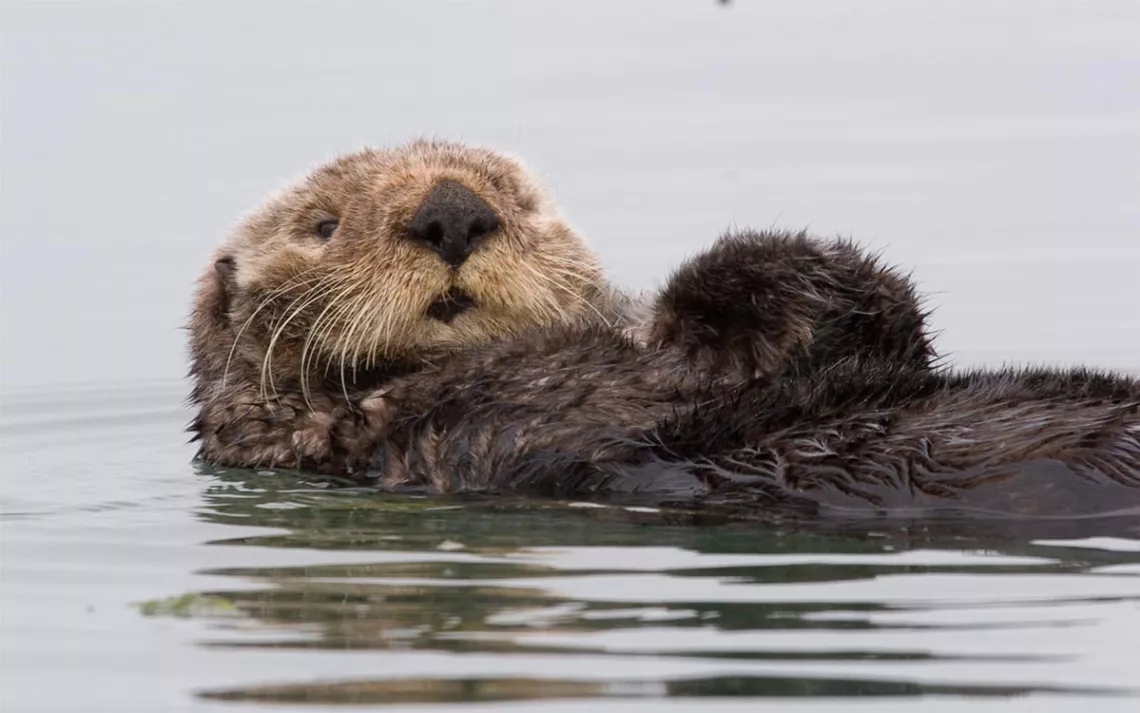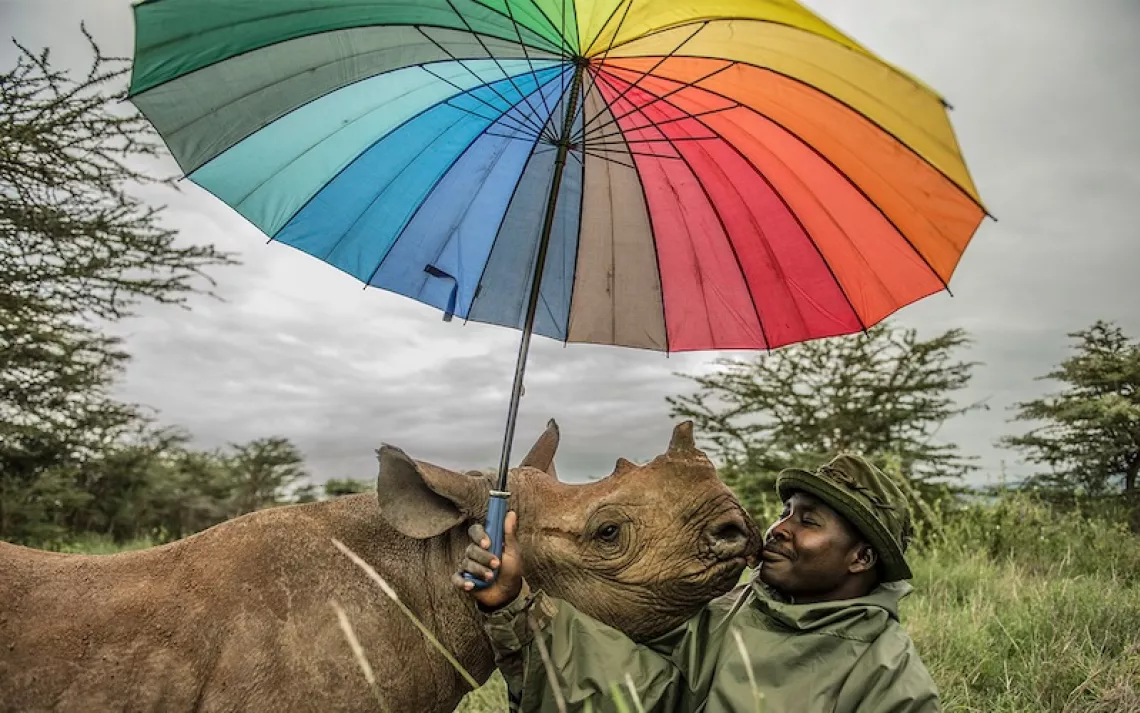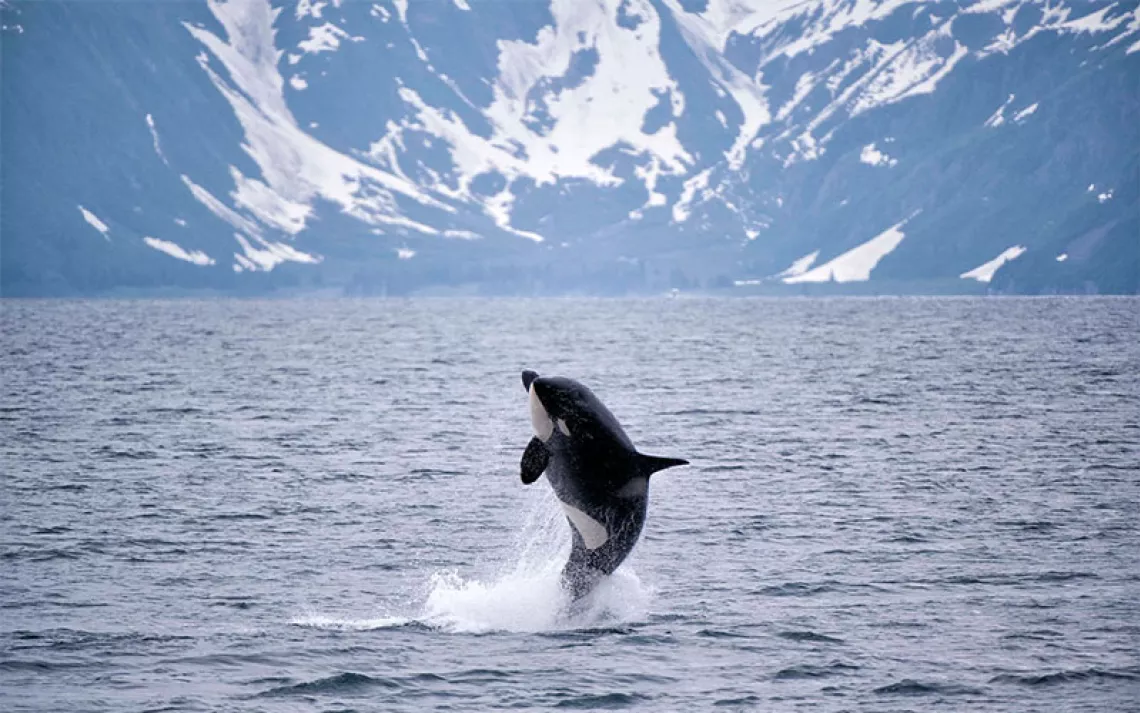Endangered Species Act Is Working for Sea Turtles and Marine Mammals
New assessment shows landmark legislation helping dozens of species survive

Photo courtesy of Mike Baird
The Endangered Species Act (ESA) of 1973 is one of the legal cornerstones of conservation in the United States, and when it works the results can be spectacular. Bald eagles and peregrine falcons have returned to the skies, wolves and grizzly bears prowl around Yellowstone, and humpback whales ply oceans on both coasts. But deciding whether the ESA is doing its job for other species is much more difficult. There are fewer scientists keeping tabs, less data, and less money. That’s why researchers from the Center for Biodiversity looked into the recoveries of marine mammals and sea turtles listed on the ESA: 78 percent of the populations they investigated saw significant increases after listing, indicating that the law is doing its job.
For the study in the journal PLOS One, the researchers looked at the best available data for 14 marine mammal species like killer whales, fin whales, sea otters, monk seals, and sea lions, and five sea turtle species that call US waters home. Because the ESA divides species into distinct populations that it manages individually, the team analyzed 23 populations of mammals and eight populations of turtles, finding that 18 of the mammal groups were on the rise and six of the turtle populations had seen significant gains. Three mammal populations saw no gains and two saw declines, while two populations of turtles showed no increase (though no groups of turtles declined after being placed on the endangered-species list).
Some of the recoveries are striking. Hawaiian humpback whales, for instance, climbed from just 800 animals in 1979 to 10,000 in 2005, which led to a delisting. The eastern Steller sea lion population along the Pacific coast rose from 19,000 in 1990 to almost 60,000 in 2013. And sea otters doubled their numbers to almost 2,700 individuals between 1979 and 2017.
Lead author Abel Valdivia, formerly of the Center for Biological Diversity and now a senior manager at the conservation group RARE, says the study shows that turtles and marine mammals have the capacity to recover as long as the right protections are implemented in a timely manner. “We had a sense that there were a lot of populations doing good or on the path of recovery,” Valdivia says. “But no one had done the analysis.”
While the study is good news, Valdivia says there’s no conservation silver bullet that stands out in the data. Each species had an individualized recovery plan and had critical habitat declared, each getting different interventions, whether that was protecting turtle nesting grounds or keeping boats and ships a certain distance from whales. The only commonality was time. The longer the species was on the list, the more pronounced their population recovery was.
The two mammal species in decline, Valdivia says, did seem to share one problem. The population of southern resident killer whales in Puget Sound and the population of Hawaiian monk seals in the northwestern Hawaiian Islands both face challenges associated with feeding. For the seals, changes in the ocean likely associated with climate change have shifted their feeding grounds away from their traditional strongholds. The whales similarly are affected by diminishing stocks of Chinook salmon in Puget Sound as well as increases in pollution and boat traffic.
It wasn’t the team’s intention to just study whales, turtles, and high-profile, charismatic creatures. Valdivia says they initially wanted to look at all marine creatures in US waters protected by the ESA. But that was problematic. The team found that there was little data on most marine species. Many fish species have been listed as endangered in just the last decade, and recovery plans and critical habitat have yet to be implemented for them. Even well-known species, like populations of polar bears in Alaska, didn’t have enough data to create meaningful population profiles. Once those species are analyzed, the picture may not be so positive. But the team hopes to one day analyze more of the 62 marine mammals and turtles found in US waters. “For the other marine mammals and sea turtles we didn’t analyze, it’s just a matter of waiting for more data and more time for the ESA rules to get in place,” says Valdivia.
However, if some politicians get their way, many species will never have recovery plans put in place or get the time needed to recover. The Trump administration has yet to confirm a director of the US Fish and Wildlife Service (FWS), which implements many ESA plans, but interim directors have included noted ESA foe Susan Combs. The current nominee, Aurelia Skipwith, who has worked for agribusiness giant Monsanto, is also feared to be an opponent of the ESA.
Under former interior secretary Ryan Zinke, the FWS put forth proposed new rules that would overhaul the Endangered Species Act administratively, including allowing local economic impacts into listing decisions and changing the 4(d) rule, which automatically grants the same blanket protections to animals listed as “threatened” as those listed as “endangered.” Instead, the change would require that each threatened species would receive an individualized protection plan—one that would take a lot of time to develop and could be challenged in the courts. A flurry of Republican-sponsored bills in the House last year also aimed to reduce or redefine the ESA—though, with the Democrats now in charge of the chamber, those bills are likely dead. If the rule changes for the FWS are approved, it’s also likely they will lead to protracted legal battles with unknown outcomes.
Whatever the future holds for the ESA, Valdivia says this study, at least, shows its implementation is not in vain. “I think the main point we’re trying to make is that this is a positive news story in a background of really bad news about overfishing, pollution, and climate change,” he says. “I think it’s good to see the silver lining in marine conservation.”
 The Magazine of The Sierra Club
The Magazine of The Sierra Club






